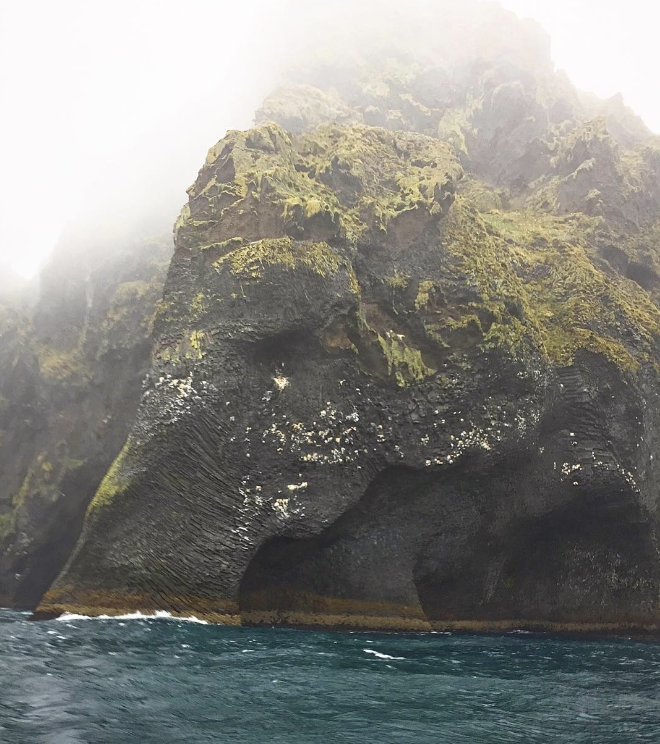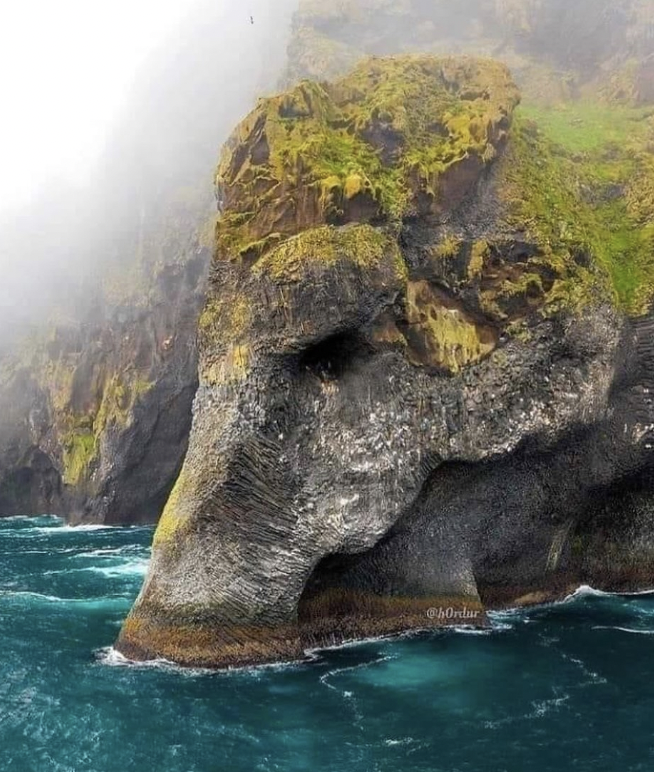
Image: @pantouflesdeverre on Instagram
Welcome To Elephant Rock
There’s a rock off the coast of Iceland that looks like a giant elephant is sticking its trunk in the water. Elephant Rock, as it’s known (surprising, yes) is the subject of much folklore and myth. It’s also one of the most incredible natural rock formations on the planet.
Not only is it a popular tourist destination, but it’s also a local legend. One of the area’s main attractions, it’s shocked and impressed people from all over the world with its realistic appearance and resemblance to a true elephant.

The grey colour of Elephant Rock combined with the texture and shape give it an even more realistic appearance. Makes you wonder if Mother Nature herself had a hand in carving its face.
Local legends include stories that an elephant stopped to rest at the edge of the water and fell asleep. Sadly, it got too much sun and dried into stone. Poor thing has been there ever since.
There are also stories that humans carved the shape into the rock as art. This is not true (same as the story about a real elephant turning to stone in Iceland) but it does have some whimsy to it. Imagine the dedication of an unknown artist taking the time to carve this into the rock? That would be amazing… as untrue as it is.
Anyways, the truth is, Elephant Rock in Iceland came about totally naturally. It just happens to resemble an elephant. The surrounding area is simply fortunate to benefit from the tourists that come to see this creation of nature.
So, Is It An Elephant Or A Rock?

It’s a rock that looks like an elephant. Unlike other formations which take on the appearance of alien sculptures, this one looks like a very human creation.
However, it’s not a human creation at all. Even though the rock is ‘elephantine’ enough to appear that it was sculpted by the trained hands of a sculptor, complete with realistic looking “skin”, this is not the case.
How Did Elephant Rock Form?

The most popular theory surrounding Elephant Rock in Iceland is that it came about as the result of a volcanic eruption.
Eldfell Volcano has erupted many times in the past, and actually continues to be active even now. In 1973, a huge eruption caused significant damage to the island of Heimaey, altering the entire shape of the island.
However, it wasn’t this volcanic explosion that shaped Elephant Rock, as the massive pachyderm pre-dates the ’73 eruption.
The origins of Elephant Rock in Iceland are most definitely volcanic. More specifically, it came to be this shape because of the rapid cooling of lava after a fairly large volcanic eruption.
Where Is Elephant Rock?

So where is Elephant Rock in Iceland? It’s located on Heimaey, which translates to “home island” in English. This island in the Vestmannaeyjar archipelago has a permanent human population, which is rare for an island with an active volcano.
The permanent settlement of Heimaey is located 200 metres above sea level, and covers 13.4 square kilometres. The population is around 4,000 people, a number which shrunk and has never recovered since the 1973 eruption.
How To Get There

If you’re looking to do some cool things in Iceland, you’ll definitely want to include this natural sculpture in your plans.
Because of its tourist popularity, one of the easiest ways to visit Elephant Island is to leave from Reykjavik. You’ll need to drive along the South Coast for about two hours, and hit the ferry port at Landeyjahöfn. From here, you can figure out how you want to see the island.
A really popular way to see Elephant Rock is to take a Westman Islands tour, then take a ferry from Landeyjahöfn or Þórlakshöfn to the Westman Islands. From there, you’ll need to take a one-hour boat trip to take a selfie in front of this gorgeous rock.